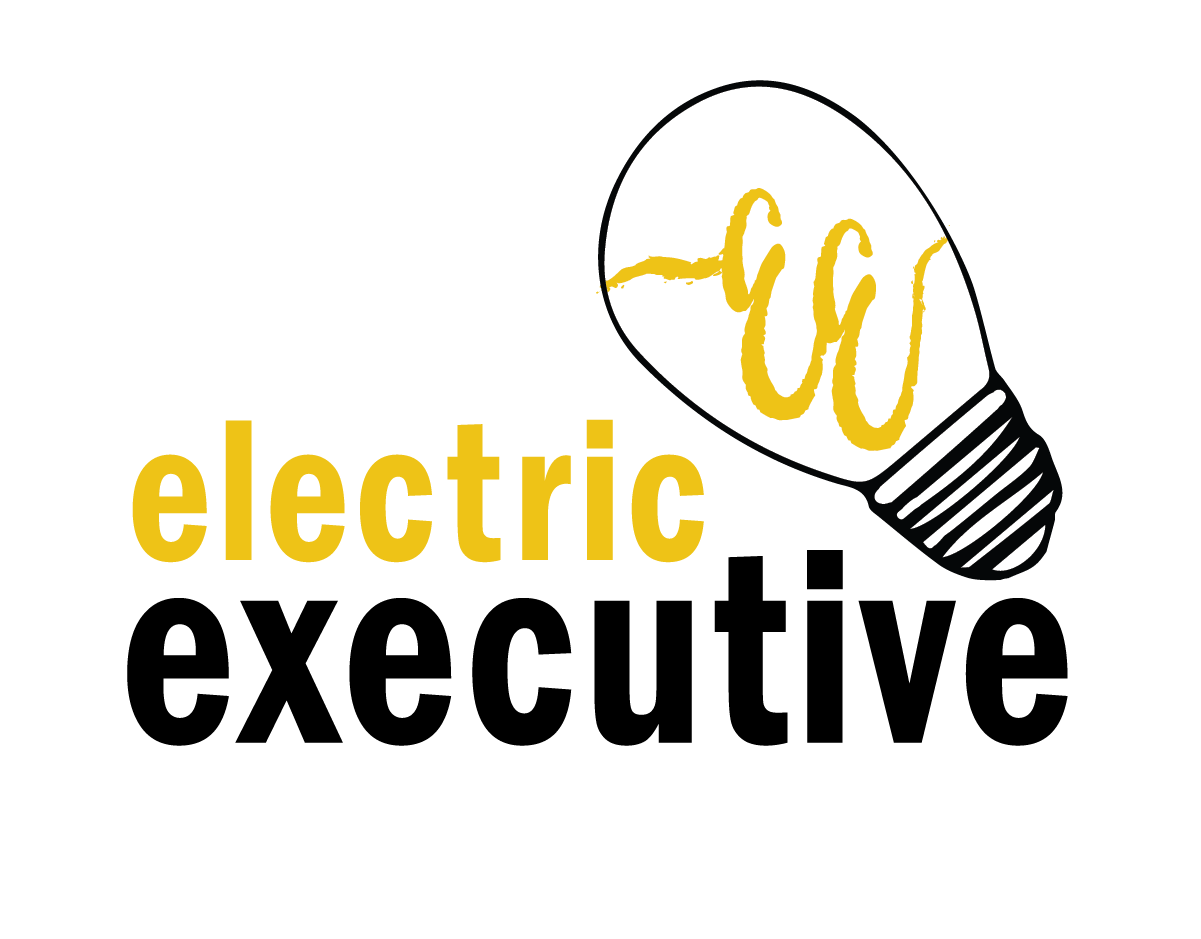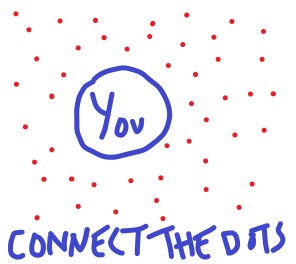
As I wrap up Simon Sinek’s new book, The Infinite Game it has me looking around my world in the nonprofit sector. In The Infinite Game, Simon discusses the numerous individuals and businesses who have played the infinite game, some played it well. These companies learned and invited change that enabled them to maintain their values while innovating for the future. Other organizations and leaders failed to innovate or adapt; remaining focused on short-term, finite returns and objectives. In fact, in the for-profit world, especially in publicly traded companies, this nearsightedness can be all too common when the focus is only on the shareholder.
In the nonprofit world, we are no different. Although, the “infinite game” for us, can sometimes be daunting to imagine. As you know, we are supposed to be working ourselves out of business, so applying an infinite mindset doesn’t seem intuitive. What I draw from Simon’s newest book is that the infinite game requires leaders who are willing to cast a vision and willing to push that vision forward. I’ve often said my job as a leader is oftentimes to walk out on the smallest branches to the very ends of those branches not knowing if those branches will break. I believe it is on theses branches where you push the boundaries of innovation and advocacy. It is always safer to be near the trunk of the tree, both feet firmly planted and if need be both arms hugging the trunk of the tree. However, that safety will not serve those impacted by our services, it will not add value to our employees, and it will not change the game.
I have frequently said that “shelters have been shelters far too long.” This isn’t to knock the necessary services that shelters have offered for decades, but to frame the idea that we now know more than ever about the people we serve and we must apply that knowledge and learn from it. We must utilize technology, advocate for our clients and our employees, and adapt in order to affect real, long-lasting change. In an industry where scarcity, fear, and secondary trauma are common barriers, this is the infinite game. As a nonprofit leader I know we must constantly be looking at the most innovative aspects of our sector. Who is innovating their programs and services in a significant way? Who is running or considering running a social enterprise? What benefits or culture can we build to move us closer to becoming an employer of choice? How are we messaging to our donors? How do I personally remain authentic and vulnerable, yet be viewed as rational and strategic? These are a few of the questions that help frame up the infinite mindset. What are we currently doing that we can enhance and improve? What differentiates us today, and in the future?
Today, while I was out on a run listening to the end of this book, my mind was flushed with ideas and inspiration about what we could be doing over the next three to five years. Ultimately if we can act on a portion of these ideas, we can put our shelter in a better place than it is now, which is better then where it was when I inherited it in 2015. Sometimes to play the infinite game you do need finite goals, but those goals should ultimately serve long-term visions. Simon opens the book stating that CEO’s or in my case, Executive Directors, must be Chief Vision Officers. Like running a business, sometimes nonprofit leaders get pulled into the operations, which hinders their ability to keep their eyes on the horizon and limits their ability to meet the organization’s future needs. This is why a nonprofit board of directors must make the right hires for their organization’s leaders and those leaders must build the internal capacity to allow them to be the Chief Vision Officer.
Simon was interviewed by Inc. Magazine about The Infinite Game. Here is a response to one of the questions:
How does playing an infinite game affect how leaders deal with failure?
It allows them to take everything more in stride. There is a wonderful Chinese story of a young man who is born with an amazing talent for horse riding. Everyone in the village says you are so lucky. The monk says, we’ll see. The young man falls off his horse and breaks his leg, and his career is over. And everyone in the village says, you are so unlucky. The monk says, we’ll see. And then war breaks out, and all the young men go off to battle. But this young man can’t go because of his busted leg. And everyone in the village says you are so lucky. The monk says, we’ll see.
This is a journey. If we look back at our lives and some of the trials and tribulations we have been through, rarely will we say we want to go through them again. But we learned something from them. And we became better versions of ourselves because of them.
It’s time for nonprofit leaders to cast big, bold visions of the future, to learn from their past mistakes and become better versions of themselves to guide organizations through the hard times and into the future.
While reviewing the 30+ year history of the nonprofit I run, there were remarkable stories of triumph and innovation. There are also stories of financial struggle and real difficulties. As a leader playing the infinite game, it’s important that I learn from both the good and the bad to shape the forever future of our organization. It’s important that I play, the infinite game.
“…you can fail at what you don’t want, so you might as well take a chance on doing what you love.” – Jim Carey
Who is guilty of self-sabotage?
I am imagining the number of people nodding their heads or randomly in public raising your hand. This topic is not unique, and you’re not unique for falling victim to self-sabotage. I recently completed a book by Gary John Bishop on this topic. If you’re not familiar with his work, he is pretty straight to the point Scottish author. I enjoy his work because it is brutally honest, utilizes humor, and hits you with some honest facts. The whole premise of the work is knowing your saboteurs, so you can work to create the life you imagine by dismantling your old operations and creating new operations.

Personally, I’ve engaged in plenty of self-sabotaging behavior and thoughts my entire life. I literally just ate a piece of chocolate and peanut butter after re-reading my goal to get to 170 pounds this year. I bet we can all relate to self-sabotaging a diet or health goal. Although your health is important and we all need to trace down the roots of those behaviors to live the best life possible, there are more dangerous narratives out there. These narratives may have been repeated for decades and reinforced by those closest to us.
Let’s take a moment and discuss one of the greatest sabotaging behaviors I’ve noticed in my leadership journey. Here is the fact, people fear success. I imagine the eyes rolling and the heads shaking in disagreement. The fact of the matter is that the fear of success stops a lot of potential entrepreneurs from getting started, a lot of leaders from developing, and ultimately limits our own potential. Literally, there are articles on this very topic like this one, in Inc. Magazine, Why Fear of Success Is Holding You Back More Than Fear of Failure. The article author states that your awareness of self-sabotage is half the battle. It’s a fact that most people have a fear of success, this means you.
Now that you have the awareness, it’s time to act. Why aren’t you seeking those promotions? Why aren’t you starting that business? Why aren’t you following your dreams and passions? Most people have very practical excuses. Maybe they don’t have the time to make the switch. Maybe they have a family that depends on their stability to maintain that corporate job. Maybe they need to maintain those corporate benefits. Maybe they are too old, or maybe too young. I had the opportunity to lead two nonprofits by the age of thirty. During each of those experiences, there were sabotaging thoughts.
· Do I have enough experience?
· You’re too young to lead an organization.
· What if I make a mistake?
· What if I can’t secure enough resources to maintain the mission?
· I don’t have the right education or upbringing.
These thoughts were all opportunities for me to sabotage my opportunity to become a leader. As I approach my fourth year as executive director of a nonprofit homeless shelter, I reflect back on my experience. Prior to accepting the role I had another opportunity on the table. The salaries for the positions would have been the same, except the other role would have been a mid-level leadership role in a larger organization. I wouldn’t have had the entire weight of the organization on my shoulders. I wouldn’t have to demand the change of an entire system. I wouldn’t have had to walk out on those tiny branches as a leader, sometimes armed with only a gut belief to guide my decisions. I could have made the “comfortable” choice. This isn’t the first time I’ve had to confront choices and beliefs. When I graduated in 2007 from the University of Northern Iowa, I walked into a job making $27,000 a year. At the same time, I had over $75,000 in student loan debt. I had friends and family members offer me tremendous opportunities that would have been safer financially, but they were outside my area of passion. I wanted to help people. I wanted to change things. I wanted to make an impact on this world. Have you ever heard Jim Carrey talking about his dad’s comedic talent? I recommend you watch the video after you finish this article. However, to wrap up my point I’ll pull the direct quote from Jim.
“So many of us chose our path out of fear disguised as practicality,”…”My father could have been a great comedian, but he didn’t believe that was possible for him. So, he made a conservative choice and instead he got a safe job as an accountant.”
“When I was 12 years old, he was let go from that safe job,” he added. “Our family had to do whatever we could to survive. I learned many great lessons from my father, not the least of which is that you can fail at what you don’t want, so you might as well take a chance on doing what you love.”
It’s time to end your self-sabotaging behaviors and thought patterns. It’s not easy to confront these thoughts, sometimes they will wake you up in the middle of the night. You have to understand that you’re in control of your destiny. You deserve to live your dreams. You deserve to be a leader. You either give in to the sabotaging thoughts, or you dismantle them and build the system and life you want. If you’re persistent enough, you will breakthrough. That doesn’t mean you may not have to occasionally combat “imposter syndrome” or “self-doubt”, and it certainly doesn’t mean the self-sabotaging behaviors will be gone. But you will have built the awareness needed to confront it going forward. Your awareness is your control, and your control is your power.
In my 20 years of work experience (yes, I’m counting the newspaper route and walking the neighborhood shoveling snow); I have worked in many sectors through part-time and full-time employment. My experience includes: delivering newspapers, washing dishes, roofing, custodial work, landscaping, ice delivery, and public and nonprofit sector work. One piece of workplace advice is usually the same, leave your negative baggage at the door. I have come to realize this advice is rarely followed. What I tend to see instead, is people leaving energy and passion at the door – a very deadly combination. If you’re showing up with negativity and you’re not bringing the energy and passion, you’re likely not productive. You’re likely toxic.
Now, I will acknowledge, everyone has bad days. There are highs and lows throughout a year. But I challenge you to analyze how you are showing up. For me, I usually show up like an F5 tornado. I know this can be abrasive to some, especially to those who are bordering on toxic. But, being someone very passionate and driven in my work, by showing up in full-force I’m being authentic to who I am. If you spend Sunday into Monday dreading your work week, it is a sign. If you can’t change your environment, aka your employment, you can change your attitude and approach. Do this and you will have more positive results.
A few tips on how to show up with passion:
Remember your why!
Why are you working this job? Is it something you love to do and are passionate about? Great, then remember that why. Is it to provide for yourself or your family? Great, then remember that why. Whatever the reason, don’t forget, on some level that job is fulfilling a need you have.
Remember, you are on stage!
Yes, you are on stage! And like a Broadway musical, the audience is judging your performance. If the audience is your supervisor, manager, or CEO, what do you want them to take away? I’m not saying to put on an act or not be genuine. I’m saying, be happy and find opportunities to let your true personality shine. In short, don’t be Stanley, unless you can be vacation Stanley (remember that episode). Try to be a hybrid version of Jim, Pam, Dwight, and Michael. Find strengths and passion in the various aspects of your skills and/or personality. I apologize if you don’t get The Office reference.
Happiness is the key to greatness!
Does being happy mean you are passionate? No. Yet, if you are unhappy at work, I know you are not able to be passionate. If you are showing up unhappy or dreading work, it’s time to do a gratitude inventory. It’s time to make a list of all the reasons you’re grateful for your job, and only focus on that list.
“Gratitude can transform common days into thanksgivings, turn routine jobs into joy, and change ordinary opportunities into blessings.” – William Arthur Ward
In my time working in various environments I have never heard, “they are too passionate.” I have heard, “they are negative”, “they are toxic”, or “they are phoning it in.” I love when people ask, how much coffee have you had? That means I’m showing up, giving my passion, and living my core values. As I always say, passion plus purpose equals electricity. It’s time to find your electricity again! Bring the energy inside and leave the negativity outside.

If you take the time to look up the word momentum, you will find the following synonyms: energy, power, strength, and drive. These words are all very positive in terms of one’s personal qualities. But what does it take to build momentum in your professional life? I firmly believe that momentum is created by the events, activities, and constant hustle done outside the public eye. Why not consume books, articles, podcasts, and videos to better yourself? It is through these activities that we will be able to answer the door when opportunity knocks. Similar to rowing, and laid out in Newton’s Law of Motion, the rate of change of momentum is proportional to the force applied. Imagine that you have been applying force, working hard, on the grind – you have built up momentum in your life. Now, how do you take advantage of that momentum and keep things flowing?
I was fortunate to have an opportunity to become an Executive Director over eight years ago. I had worked hard, built momentum and done everything I could possibly do to be offered the position. The offer came. I remember those negotiations vividly; my expectations and those of the company did not align and ultimately, we could not come to an agreement. All of that work, all of the professional momentum I’d built, came to a halt. The professional goal I had been working toward was no more. But rather than stall, I used my energy and my drive to continue to better myself. I consumed books, articles, podcasts. I learned to advocate for myself and when I was presented with a different opportunity to become an Executive Director, five years later, I was able to take advantage of the momentum and the opportunity.
Les Brown often states, “it’s better to be prepared for an opportunity and not have one than to have an opportunity and not be prepared.” I hope you are preparing for the opportunities you don’t have yet. Opportunities can be fleeting, they can be here today and just as easily gone tomorrow. Take advantage of them. Each opportunity you take is what will likely produce your next opportunity, the one after that and the one after that. Seize those opportunities and don’t let anything stop you from building, creating or maintaining your momentum.
 What is your morning routine? If you just said to yourself, routine? I get up, hit the ground running and I’m out the door twenty minutes later. Also if you laughed because your routine is spent frantically herding kids like sheep and it’s a whirlwind of chaos, I’m going to challenge you to rethink how those few extra minutes of sleep may actually be setting your day back. During the “work week”, my routine has been relatively consistent for many years.
What is your morning routine? If you just said to yourself, routine? I get up, hit the ground running and I’m out the door twenty minutes later. Also if you laughed because your routine is spent frantically herding kids like sheep and it’s a whirlwind of chaos, I’m going to challenge you to rethink how those few extra minutes of sleep may actually be setting your day back. During the “work week”, my routine has been relatively consistent for many years.
Wake up -> Coffee -> News -> Inspiration -> Shower -> Time to Crush
The inspiration for me is often quotes, stories, but mostly video and audio content. I love searching YouTube for motivational videos and coming across the greatness of Les Brown, Tony Robbins, Eric Thomas and countless others. When I tell people I consistently get up 60-90 minutes before I leave for work, they look at me like I’m crazy. I don’t know, for me, it just works. I believe this puts my mind in the right place to conquer any of the day’s tasks and to be the best version of myself on that given day. I was referencing my routine with people last weekend, and I frequently talk about this routine in Transformation Thursday, a course I teach for adults in our homeless shelter. A friend who was in on the conversation last weekend sent an article that was shared by the Young Nonprofit Professionals Network. The article is titled, The morning routine experts recommend for peak productivity, the article written by Eric Barker sums up five keys:
1. Stop reacting. Get up before the world starts making demands so you can figure out what’s important to you.
2. Decide what matters today. You won’t get everything done, so what will move the needle? What will let you end the day feeling like you accomplished something? No more than 3 goals.
3. Use your “magic hours” for those three things. Your peak productivity time is probably an hour or two after you wake up. If you know your best hours are at another time, fine. Protect your “magic hours.”
4. Have a starting ritual. Go to the place where you get stuff done. Get your coffee. Anything that tells your brain it’s time to rock.
5. When things go sideways, use “positive procrastination.” If you can’t tackle the super scary thing, do the pretty scary thing. Designating a super scary thing in advance as a decoy can make that pretty scary thing much easier.
I would be lying to you if I told you I went into my routine with this type of rigor. However, I frequently do the first four, I review my schedule, drink coffee and focus on the day’s tasks and how I will execute. My one addition is the inspiring or motivational content to hijack my thinking for the day (it’s kind of like a performance-enhancing drug).
Another popular morning routine principle is out there by Robin Sharma, it’s called the 20/20/20 formula. Robin believes you should spend your first 20 minutes in intense exercise, followed by a 20-minute review of your plans and goals, and finally a 20-minute routine on learning. Robin’s theory has gained a lot of traction with those who practice and preach motivation and inspiration.
Regardless of the routine you latch on to or create for yourself, it’s very important to incorporate one into your day. One of my favorite speakers, Eric Thomas, says “stop just waking up like an accident.” Eric continues the speech by asking; what do you want in your life? If you have a plan when you wake up, you will put yourself in a place to deliver the best of yourself to the world. Wake up with purpose, you deserve it!
As we start another new year there is a flurry of activity where people are talking about goals for the next twelve months, 365 days, 52 weeks or however you measure the year. As we embark on the potential that a new year brings, I am reminded of a tremendous quote by Steve Jobs. Jobs said, “You can’t connect the dots looking forward; you can only connect them looking backward. So, you have to trust that the dots will somehow connect in your future. You have to trust in something – your gut, destiny, life, karma, whatever. Because believing that the dots will connect down the road will give you the confidence to follow your heart even when it leads you off the well-worn path, and that will make all the difference.” I often imagine the students who listened to these remarks in person and I hope it stirred them like they continue to stir me. I have listened to variations of that Jobs’ commencement speech upwards of fifty times, each time is still as powerful as the first.
Earlier this year, I was at a conference in Atlanta, GA. The sequence of events that led me to the conference was by no means a coincidence. I had attended a ribbon cutting for a Hope Inside location at Mutual of Omaha. Hope Inside is a nonprofit that was started by John Hope Bryant. I arrived a little late to the presentation and heard this gentleman speaking. He was sharing a story about spending time homeless and starting the silver rights movement. I found his remarks personally touching and I said to myself, I need to meet him. Naively enough I went up and introduced myself, and that is how I met John Hope Bryant. I was telling Mr. Bryant about how I was working to instill hope into the homeless we served at our shelter using concepts of positive psychology. The brief exchange allowed me to get John’s contact information. I followed up and was able to get on the phone with John’s Executive Assistant. Through this exchange, his assistant picked up on my passion and invited me to attend the 2017 Hope Global Forums. I made travel arrangements and was able to attend the forum. The opening remarks of the forum were delivered by Chris Gardner, the same Chris Gardner played by Will Smith in the Pursuit of Happyness. The remarks were amazing, and I knew if nothing else came out of the conference the trip was already worth it. I didn’t arrive in time to eat dinner so after the remarks I went up to my hotel room and changed into some jeans and set out to find a late-night dinner. On my way, out of the hotel, I looked over to see Mr. Gardner and some of his entourage. As you can see the dots were still connecting. I took the opportunity to go up to Mr. Gardner who was sitting waiting for his transportation. I put out my hand and said Mr. Gardner as a formerly homeless kid who is now running a homeless shelter your remarks were inspiring and exactly what I needed to hear. I can still see the look in his eyes as he rose to his feet, gave me a giant bear hug, and said god bless you. From attending the ribbon cutting, making it to Atlanta, and meeting Chris Gardner and about 20 other amazing people the dots all aligned. I could only see that as I reflected on the whole chain of events. I often share this story during Transformation Thursday, as I relate the story of Chris Gardner and the difficulty of his journey.
Personally, the last year has delivered quite a few positives and some massive unexpected life changes. It is amid these “massive life changes”, where we must recall that this change will shape the next great thing in our life, and as we move forward and reflect, the dots will become apparent. I know it is difficult to trust that these experiences, often hardships, are going to lead to positive life experiences, but we must do exactly that. Whether that change is a failed relationship, a personal mistake, or a career misstep there is growth and learning in those experiences, if you believe that the dots will connect. This belief will give you the confidence to navigate that life change in a tactful and positive way. Willie Jolley said, “A setback is a setup for a comeback.” This is one of my go-to quotes as I go about my work at the shelter. If you’ve experienced a setback, start to plan for your comeback. Get out that journal and plot out some goals and make the next year one for the record books. If you’ve started the new year with a goal and have already strayed off track, it’s never too late to get back on track. Life is all about adjusting to get to that better version of yourself, and realizing that you never arrive, adjustments need to be made each day because each day you are learning and becoming better.
As an avid ALDI customer, I’ve grown accustomed to the ALDI ways. ALDI shopping is a unique experience, you’ll see people scavenging the aisles for empty boxes to load up their groceries, even at times emptying the contents of said boxes onto shelves in order to acquire them. Entering the store you’ll see shopping carts tethered in a string by chains that can only be released by feeding the shopping cart a quarter. One day I had a great idea to pay it forward. I would unleash one of the carts, use it to shop and then gift that cart away to an unsuspecting shopper as I exit the store. This small gesture is met with many warm responses, smiles, and the occasional cool glance and head nod. What I learned by doing this small thing is that generosity and kindness is one of the things that bonds human fabric together.
Personally, I have always been very charitable, often giving money, although at times I technically had no money to give. I encourage you to give to things you love, especially to the amazing nonprofit organizations that do such transformative work. As I continue to advance my career I give more and more each year. I believe there is something powerful that happens when you give with your heart and stretch what is comfortable. As the Executive Director of a homeless shelter I often get the question, “Should I give directly to the homeless?” My response is usually, “do you feel like giving to them?” If the answer is yes, then by all means, give to them. However, this is often followed by some short exchange of questions regarding purchasing booze or cigarettes and the multitude of other “things” where the money may be spent. I usually then advise if they are questioning the gift then maybe they need to find another way to give. The intent while giving is very important. When you give with no strings attached, no ill thoughts, no expectations, and no judgments it makes the experience truly powerful. I would say this happens when you give from your heart and not from your head. I understand that this logic defies all principles taught by financial advisors, but what you lose with your advisor you will gain with the universe.
 If you are wondering what giving from your heart looks like you can check out this charitable act by a 9-year-old in Iowa. As an Iowa Hawkeye fan, I thought it was incredibly touching and highlights the impact of giving. The following post was put on the University of Iowa Stead Family Children’s Hospital.
If you are wondering what giving from your heart looks like you can check out this charitable act by a 9-year-old in Iowa. As an Iowa Hawkeye fan, I thought it was incredibly touching and highlights the impact of giving. The following post was put on the University of Iowa Stead Family Children’s Hospital.
“We’re moved by a touching gesture from 9-year-old Riley Lafrenz of Indianola, Iowa. His mom, Missie, shares that Riley “was inspired by “the wave” to the children’s hospital during the Iowa football games. His “life savings” was supposed to be for a pack of NFL cards…but he decided this was more important.” Riley – thank you for your kindness and generosity! You are an inspiration”
We should all be more like Riley, we can learn a lot about charitable intent from our 9-year-old friend. Needless to say, Riley is going to receive quite a few packs of NFL cards from caring adults who came across this post. Additionally, Riley’s donation was matched by a number of adults who were inspired by his kindness.
We are in the midst of the holiday season and I advise you all to find a way to give. This can be in the $0.25 variety at ALDI, or the life-altering contribution to a charity or nonprofit you support. Booker T. Washington is quoted as saying, “Those who are happiest are those who do the most for others.” How are you going to find your happy this holiday season? How can you incorporate a giving routine into your New Year’s Resolution? I am certain that by doing so you will get more in return.
If you’re questioning Riley’s logic or even my logic, check out this powerful Tony Robbins story where he talks about gifting his last $21 or $22. Tony states that this act was the most powerful experience of his life.
For as long as I can recall I have wanted to help people. I have vivid memories of this fact, and throughout my life, this has been realized in various ways. I remember as a child when I received a Batman mask, cape, and gun. I couldn’t wait to get that package opened. I quickly threw on the costume, and let my mullet drape down the back of that cape. I posed for this picture so fast I couldn’t even get both eyes inside the mask. I remember having a very similar response when I received a Ghostbusters outfit as a child, there was something magical about sliding that ghost trap across the floor. I consider myself very lucky in a lot of ways. However, it must be said that pursuing my passion to help people throughout my life is the thing that has benefitted m e the most. It’s not easy to stick to the long game of that inner childhood passion, but I know how important passion is to live a fulfilled life.
e the most. It’s not easy to stick to the long game of that inner childhood passion, but I know how important passion is to live a fulfilled life.
When I went off to college I was certain that I would leave four years later and become a police officer. This was in spite of a few negative encounters with police officers throughout my youth. Although I took a detour from my original goal to become a police officer. I followed the advice of a college professor and pursued a path working with juveniles at the Iowa State Training School. I went on to become the Executive Director of a financial education and mentoring nonprofit, worked in child welfare, and now I’m Executive Director of a homeless shelter. You see, I didn’t grow up to be Batman, but the desires that existed within that blond mullet still exist today.
I’m not sure what your dreams or passions were as a child. Maybe you wanted to be Batman, a firefighter, a police officer, the president, or an astronaut. The things that we are drawn to before life fills us full of fear and self-doubt are related to our innate dreams and passions. I advise you to find a way to get back to being your own version of Batman. If you can’t do it formally through your career you have to find another avenue. There is tremendous value in incorporating your passions into your life. This can be done through hobbies, volunteerism, or coaching our youth. Take time and think about that childhood dream and try to determine what was driving the dream, then act. You will find yourself happier and more fulfilled. “It’s not who I am underneath, but what I do that defines me.”-Batman


